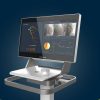Reliable network connectivity is a critical part of hospital IT infrastructure. From powering hospital systems and accessing electronic health records (EHR) to connecting crucial medical devices. According to Gartner, 5G and high-functioning networks will accelerate mobile capabilities in healthcare and help connect more than 90% of in-hospital medical devices by 2025. While these predictions sound promising, they don’t take into consideration the big connectivity challenges that hospitals will continue to experience as technologies evolve.
Congested networks, complex building structures, and competition among large numbers of devices, like MRI and CT scanners, have a huge impact on connectivity, inhibiting the ability to transmit data outside of hospital buildings. That interference means 5G, Wi-Fi and Bluetooth can’t always be relied on to send data from in-hospital devices to medtech companies in real time.
So how can medtech companies connect to their in-hospital devices to monitor performance and usage remotely and reliably?
Radio Technology Addresses Hospital Connectivity Issues
It turns out that a new use of radio technology is a viable solution to this challenge.
Long Range Wide-Area Networks (LoRaWAN), a form of radio technology, uses radio waves to broadcast data. It has a range of 20–30 km (12–18 miles) and can broadcast a few kilobytes of data per day, which is enough to send information such as device activity or flag when vital medicine is low, it and has a battery life of one year. All attributes are ideal for broadcasting medical device data out of hospitals.
When testing LoRaWAN in hospitals, a couple of enhancements were needed to make it work:
- A bespoke antenna for using LoRaWAN
- Development of capabilities to profile the radiation pattern from the antenna to create integration methods that would work for all hospitals, regardless of their infrastructure
Once those adjustments were made, it was found that LoRaWAN could transmit data consistently in real time through hospital walls, allowing medtech companies to receive crucial data in a reliable way.
The Benefits of LoRaWAN for Medtech Companies and Hospitals
In addition to allowing medtech companies to reliably receive data from in-hospital connected devices after each use, there are numerous benefits to leveraging LoRaWAN:
- For medtech companies, device performance can be monitored, and any issues flagged immediately. Device performance data can also be used to predict maintenance issues. This increases the reliability of devices and ensures they always run to optimum performance.
- Medicine inventory levels for devices that administer or use medications can be actively monitored, enabling medtech companies to bill in real time and avoid resting capital being tied up in stock as a result of delayed billing.
- Hospitals can operate more efficiently, and devices can operate at peak productivity; vital supplies of life-saving technology and medication can be remotely monitored to ensure they never run low.
- The speed and accuracy of patient care can drastically improve; medical professionals can have peace of mind that the right supplies will always be available for patients. They no longer need to manually operate a device, or log and order medication, freeing up more of their time to spend with patients.
Demonstrating the Effectiveness of Radio Technology for Hospitals
During the initial testing phase in hospitals in the United States and Ireland, hospitals found they needed far fewer routers when they used LoRaWAN and achieved a much stronger connection. One hospital, which previously used 20 routers to connect a single ward, now only needed one router. LoRaWAN transmitted data faster both across and out of the hospital. Plus, it was more cost and time-effective to set up. In another hospital, installing one LoRaWAN gateway enabled them to receive transmission through the entire building, which had previously been using 300 Wi-Fi repeaters without achieving full connection.
Overall, LoRaWAN is quicker and easier to implement than current hospital Wi-Fi based systems. Hospitals need less routers and they don’t need an engineer to come out and program each device.
The Future of In-hospital Device Connectivity
It’s clear that connected devices deliver a lifeline to patients across the healthcare system, and while in-hospital devices continue to grow in demand, it is crucial that this growth is supported by the right infrastructure to transmit data to medtech companies in real time. As technologies evolve and increase in complexity, the demand for reliable connectivity in hospitals becomes ever more critical. We are seeing it today, as we face a global pandemic. But as we plan for the future, to solve our connectivity challenges, LoRaWAN provides a tangible solution which is cost effective to implement, offers a reliable way to broadcast data out of hospitals in real time and delivers a quick ROI.







